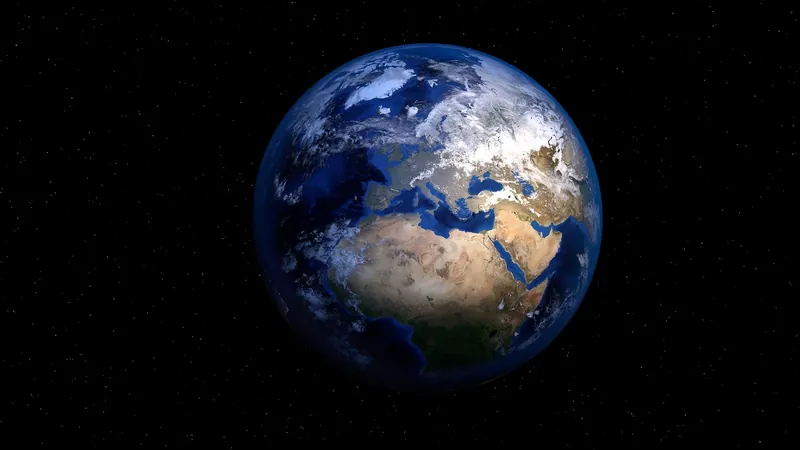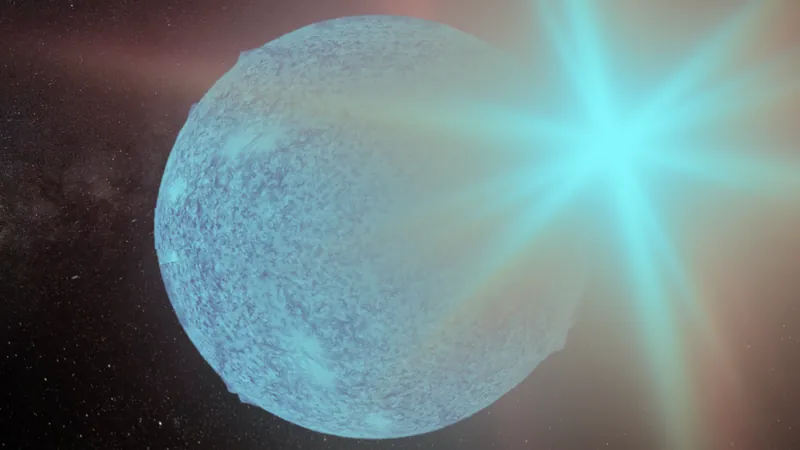
Earth Experienced a Sudden Meltdown Post-Ice Age, New Research Reveals!
2024-11-05
Author: Wei Ling
A groundbreaking study led by Virginia Tech suggests that following the last global ice age, Earth underwent an unprecedented rapid melting phase, transforming it into a watery, slushy planet. This period, referred to as the "plumeworld ocean" era, saw skyrocketing carbon dioxide levels causing the once icy landscape to become inundated.
Lead researcher, Tian Gan, explained the significance of these findings: “Our research offers crucial insights into how Earth's climate and ocean chemistry transitioned during the extreme conditions that followed the last global ice age.” The study was conducted in collaboration with renowned geologist Shuhai Xiao and was published on November 5 in the Proceedings of the National Academy of Sciences.
The Last Ice Age: A Chilling Reality
Dating back approximately 635 to 650 million years ago, the last global ice age brought extreme cold, where temperatures plummeted and polar ice caps expanded significantly. This chilling phenomenon reflected solar radiation, perpetuating a cycle of declining temperatures as a quarter of Earth's oceans froze due to dwindling carbon dioxide levels.
Xiao noted, “With exceptionally low carbon dioxide levels, a significant portion of the ocean became encased in ice.” During this frozen period, critical processes halted, including the water cycle, because evaporation was nearly nonexistent. This led to a drastic slowdown in chemical weathering—whereby rocks break down and absorb carbon dioxide—allowing atmospheric carbon levels to accumulate dangerously.
As Xiao pointed out, “It was inevitable that carbon dioxide levels would rise enough to break the ice pattern.” The end of the ice age likely resulted in a dramatic and catastrophic thawing.
The "Plumeworld" Era: A Sudden Transformation
After the carbon levels reached a tipping point, the planet's climate rapidly shifted. Within just ten million years, average global temperatures swung drastically—from an icy minus 50 degrees Fahrenheit to a scorching 120 degrees Fahrenheit.
However, the melting of the ice didn't just mix seamlessly with the ocean water. Picture this: massive rivers of glacial meltwater surged from the land, resembling a reverse tsunami, pooling atop the denser, saltier ocean waters below.
To unravel the mysteries of this prehistoric watery world, researchers meticulously analyzed carbonate rocks formed during the ice age's conclusion. They focused on lithium isotopes within these rocks. According to the plumeworld ocean theory, freshwater should produce distinct geochemical signatures stronger in rocks formed near melting ice as opposed to those formed offshore, in the depths of the salty sea. Their research corroborated this theory, providing a clearer picture of Earth's transformation.
What This Means for Our Planet
This study not only sheds light on the limits of environmental change but also offers pivotal insights into the resilience of life amid extreme conditions. The data could inform our understanding of how ecosystems adapt to drastic climate shifts, whether hot, cold, or, as in this case, a mix of slush.
As climate change continues to be a pressing global issue, understanding the past offers critical lessons for our future. Could we be on the brink of a similar transition? The repercussions of this transformation resonate through time, shaping Earth as we know it. Stay tuned as scientists dive deeper into this critical field of study!




 Brasil (PT)
Brasil (PT)
 Canada (EN)
Canada (EN)
 Chile (ES)
Chile (ES)
 España (ES)
España (ES)
 France (FR)
France (FR)
 Hong Kong (EN)
Hong Kong (EN)
 Italia (IT)
Italia (IT)
 日本 (JA)
日本 (JA)
 Magyarország (HU)
Magyarország (HU)
 Norge (NO)
Norge (NO)
 Polska (PL)
Polska (PL)
 Schweiz (DE)
Schweiz (DE)
 Singapore (EN)
Singapore (EN)
 Sverige (SV)
Sverige (SV)
 Suomi (FI)
Suomi (FI)
 Türkiye (TR)
Türkiye (TR)